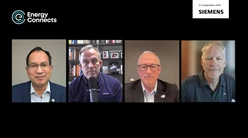Google, Kairos Power and TVA launch groundbreaking nuclear energy deal
Google announced a partnership with Kairos Power and the Tennessee Valley Authority (TVA) to build an advanced nuclear reactor in Oak Ridge, Tennessee. The project, known as the Hermes 2 Plant, will generate 50 megawatts of clean, firm electricity for Google’s data centres in Tennessee and Alabama when it comes online in 2030. It is the first power purchase agreement in the United States between a utility and a Generation IV nuclear developer, signalling a major step forward in the country’s energy transition.
The Hermes 2 plant will act as a demonstration facility for Kairos Power’s molten salt-cooled, high-temperature reactor technology. The project also forms the opening stage of a broader agreement between Google and Kairos to deploy up to 500 megawatts of nuclear capacity by 2035. By using advanced fuels such as high-assay low-enriched uranium (HALEU), the reactor aims to deliver reliable power more efficiently than conventional water-cooled designs.
For TVA, the deal makes it the first US utility to secure a long-term electricity contract from a next-generation nuclear source. Don Moul, the company’s president and chief executive, said the agreement highlights the link between energy security and economic security, stressing that electricity is foundational to both artificial intelligence and national prosperity.
Google executives emphasised that the arrangement reflects its strategy of sourcing firm, carbon-free energy to decarbonise its operations. Amanda Peterson Corio, the company’s global head of data centre energy, said the partnership with Kairos, TVA and the Oak Ridge community would accelerate the deployment of advanced nuclear technologies and help integrate more clean power into the grid.
Mike Laufer, chief executive of Kairos Power, described Hermes 2 as central to the firm’s ambition of creating a commercial fleet of small, modular reactors. He said the collaboration demonstrates how technology developers, utilities and customers can come together to deliver new nuclear energy solutions at scale.
The US Department of Energy is backing Kairos’s efforts through its Advanced Reactor Demonstration Program, which has committed hundreds of millions of dollars to developing next-generation nuclear systems. Supporters argue that such reactors are essential for decarbonising the grid and meeting the surging energy demand from data centres driven by artificial intelligence and cloud computing.
The Nuclear Regulatory Commission granted a construction permit for Hermes 2 in 2024, but further approvals, including an operating licence, will be required before it can begin supplying electricity. If successful, the project could lower costs for future reactors, strengthen Oak Ridge’s role as a hub for nuclear innovation, and mark the beginning of commercial Generation IV nuclear deployment in the United States.





